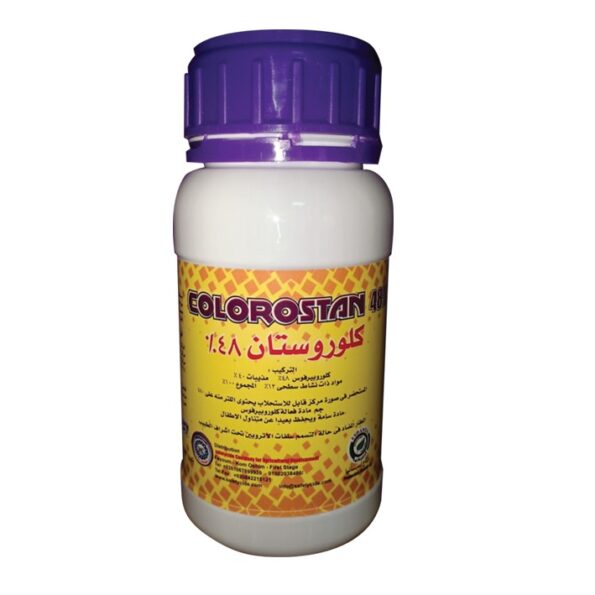
Chloristan
1.00EGP 0.00EGP
Active ingredient: chloropyrifos: 48
Chemical group and organic phosphorus
the definition:
. Chlorestan is available in the form of an emulsifiable preparation
The use of natural solvents makes the compound more efficient in terms of permeability through the skin of the larvae, as well as local permeability to the leaf epidermis, which facilitates the access of the active substance to the larvae located under the epidermis of the leaf, such as (tunnel makers - Tuta absoluta).
Impact method
Chlorestan is well touched and contagious
Chlorestan causes rapid paralysis of treated insect pests, they stop feeding, and eventually die
Based on 0 reviews
|
|
|
0% |
|
|
|
0% |
|
|
|
0% |
|
|
|
0% |
|
|
|
0% |
Related products
Installation:
Nitrogen:10%
potassium:20%
Benefits of the compound: Line Potash fertilizer is characterized by containing nitrogen and potassium in pure, easy-to-absorb form. It is also loaded with a high percentage of amino acids and carboxylic acids that expand and facilitate the absorption of major and minor elements through the leaves. Line Potash is characterized by the presence of a high percentage of potassium, which facilitates absorption. Line Potash contains amino acids that help the plant to form a high concentration of hormones and enzymes and reduce the effect of stress on the plant.
The importance of potassium for plants
It plays an important role in the mechanics of opening and closing stomata and thus controls the water balance within the plant
It plays an essential role in activating important enzymes in protein formation
It plays a role in the formation of carbohydrates at the fruit formation stage
It has an important role in the apical dominance of the plant
It will help absorb water and nutrients and transfer them to the leaves
Transports mineral salts and carbohydrates to water
Usage rates
Times of use: Drip irrigation, foliar spray per 100 liters of crop water
3-5 times 1 liter/acre 50-150 cm vegetables
4-6 times 1-2 liters/acre 50-200 cm of fruit
38 in stock
Installation:
Nitrogen:20%
%phosphorus: 20
% Potassium: 20
Compound features
X-Press is an integrated ground and foliar fertilizer that contains a group of macroelements and microelements that are quickly dissolved and absorbed
X-Press contains nitrogen, phosphorus and potassium in pure, easily absorbed forms, so it increases the total. The vegetative
X-Press treats the symptoms of macro- and micro-element deficiency in plants. X-Press reduces stress resulting from heat and frost
Usage rates
| stage to use | Dosage (kg/acre/day) | The crop |
| Immediately after transplanting | 2-3 | Vegetables |
| Before flowering | 2-4 | the fruit |
| Branching stages | 1.5-2 |
Field crops |
89 in stock
Installation:
Nitrogen :13%
Potassium: 46%
A fertilizer rich in potassium in the purest and most powerful form of potassium for absorption, which is the form of potassium nitrate. The (Elec) product is distinguished by containing potassium nitrate with a purity of 99.9%. Therefore, the compound is used as a spray on the shoots or ground fertilization to help hold the flowers and size the fruits.
Fertilizer (Potassium Alic) provides additional benefits including
High purity and low percentage of salts. – Humidity level is low. – Low acidity, rapid flow. – Rapid dissolution
– High percentage of nitrogen and potassium
Potassium nitrate (Potassium Alec) is easy and safe to use on crops, flowers, vegetables, strawberries, plants (indoor and outdoor), teak, potatoes, fruit trees, grapes, citrus fruits, pineapples, cotton, bananas, mangos, olives, tomatoes, potatoes, home gardens and green spaces.
يوفر اليك K Many positive effects such as, increased root growth, improves drought resistance, reduces water loss and wilting, improves winter cold resistance and improves resistance to pests and diseases.
Insecticide:
Active ingredient: Andoxocarb
Chemical group, oxadiazine
Definition: An insecticide that is a type of insect pest. It is used on many field crops, vegetables, and fruits, and is suitable for integrated control programs. Indexoside is available in the form of an emulsifiable concentrate, and the use of natural solvents makes the compound’s efficiency higher than the permeability through the skin of the larvae, as well as the local permeability in the leaf epidermis, which facilitates the access of the active substance to the larvae located under the epidermis of the leaf, such as (tunnel makers - Tuta absoluta).
Method of action: Indexoside acts on contact, is contagious, and has a rapid effect
Indexoside is highly effective on all larval stages
It is very effective on newly hatched worms, and it also affects a good percentage of eggs
Indexoside closes the sodium channels inside the nerves, so the larva stops feeding and moving, becomes paralyzed after 4 hours, and dies within a day. 2 days / 4 days.
Indexoside is from a modern group of chemicals that have a great effect and effectiveness on insects (especially lepidopteran worms) that have gained immunity from other carbamate, phosphorous, and pyrethroid compounds, and moult inhibitors.
Pre-harvest period, usage rate, crop pest
3 days 105 cm/acre sugar beet cotton leaf cycle
Global recommendations:
Usage rate, crop lesion
3 days, 25 cm/100 liters of water, grape fruit cycle, grapes
3 days 25 cm / 100 liters of water Butterfly potato tubers Potatoes
3 days, 26.3 cm/100 liters of water, fruit worms, vegetable cycle, cotton paper cycle, tomatoes and peppers
6 days 26.3 cm/100 liters of water European corn cycle Corn
6 days 105 cm/acre cotton leafworm
A distinct compound because it contains the element magnesium in the form of magnesium nitrate, which is one of the best forms ever through which magnesium is absorbed into the plant.
Compound features
Magnesium plays an important role as it acts as an activator for some enzymes responsible for transporting phosphorus in the metabolism process.
Magnesium is involved in the synthesis of proteins and is considered the primary color and central element of the chlorophyll molecule. Therefore, it is essential in the process of photosynthesis and thus increases production rates and raises the quality of crops.
. Magnesium is the primary regulator of potassium absorption within the plant and acts as a waxy layer on the plant's fruits
– The presence of nitrogen for protein formation within the plant
- It works to increase crop productivity
Usage rates
Foliar spraying: 3-5 g per liter or according to the fertilization program
Ground fertilization: 3-5 kg per acre or according to the fertilization program
المادة الفعالة : ابعيداگلوبرید ۲۰
المجموعة الكيماوية انيونيكوتينويد
التعريف مبيد حشري نيونيكوتينويديكافح العديد من أنواع الأفات الحشرية ويستخدم على العديد من المحاصيل الحقلية والخضر والفاكهة .
مناسب لبرامج المكافحة المتكاملة . يحافظ على البيئة والأعداء الحيوية نظرا لفاعليته في مكافحة الأفات فانه يزيد المحصول ويحسن جودته مناسبا في التصدير
65 in stock
Installation:
Nitrogen: 19%
Phosphorus: 19%
Potassium: 19%
Compound features:
Potassium source fertilizer: Potassium nitrate is quickly soluble and absorbed
Phosphorus source fertilizer: urea phosphoric acid and diaminophosphate, which dissolves quickly and absorbs quickly.
High-purity crystalline fertilizer that is completely soluble in water
It has an acidic effect, which increases the ability of micro and macro elements to be absorbed
Branching increases in both vegetable and fruit crop seedlings
Green Line balanced fertilizer for foliar spray
Usage rates
| stage to use | Dosage (kg/acre/day) | The crop |
| Immediately after transplanting | 2-3 | Vegetables |
| Before flowering | 2-4 | the fruit |
| Branching stages | 1.5-2 | Field crops |
سماد ورقي
جيل التركيب نيتروجين : ۶۲۰ – احماض امينية 45 % . ماغنسيوم %۱
امينوجيل سماد ورقي في صورة جيل يحتوي على نيتروجين وماغنسيوم واحماض أمينية حرة لجميع محاصيل الخضر والفاكه لتنشيط التمثيل الغذائي وزيادة طاقة النبات .
يحتوي على تركيز عالي من النيتروجين والاحماض الأمينية الحرة التي تقلل من تأثير الإجهاد الناتج عن الحرارة العالية والصقيع . يزيد بشكل عالي من النمو الخضري الزهري والثمري .
يساعد على تكوين الأوكسينات المسئولة عن عملية الاستطالة في السيقان وكذلك نمو البراعم يحتوي على عنصر الماغنسيوم الذي يدخل في عملية تكوين الكلوروفيل . برفع من انتاجية الفدان بشكل ملحوظ .
Usage rates
يضاف من 1-5 سم / لتر ماء ويكرر كل 10 ايام
75 in stock
Active ingredient: Fluozifop-B-Butyl 15
the definition:
Fluozide is a compound manufactured using natural oils that accelerate the penetration of the active substance into the plant leaf, which means that a higher concentration of the active substance enters the plant and obtains the highest results in controlling annual and perennial weeds in broad-leaved crops.
. – Fluoride is a selective systemic weed killer that is highly effective on many of the main generation weeds in broad-leaved crops. It is used safely and with great effectiveness on more than 10 types of broad-leaved crops that are resistant to annual and perennial cereal weeds.
Advantages of use:
It is used by farmers all over the world because of the many benefits it brings to them by using Fluozide, a selective pesticide that has no effect on broad-leaved crops.
Fuzaid is used after the germination of weeds at any age of broad-leaved crops
Fluozid: It is highly effective in combating annual and perennial grassy weeds
Fluzid is economical to use and highly effective in manual pruning or hoeing
Fluozid: A systemic pesticide that kills grassy weeds
Fluozid: It is safe to use for farms, animals, and the environment alike when applied at moderate levels
How Fluozide works:
Fluzid Majeed is systemic and is quickly absorbed through the leaves and is easily transmitted to all parts of the plant, spreading throughout the growth paths of other plant parts. It ends with the death of the grasses and the effect begins two days after spraying. If the growth of the weeds stops apparently, it becomes unable to absorb water and nutrients and is not competitive with the main crop, after seven days. Symptoms of sage skirts begin to appear from the first time you see the symptoms on the young leaves. Within 4 weeks, the grass turns brown or dark red, rots, and dies within 3 weeks.
The main weeds affected by Fluozide
Perennial grasses, long-lived grasses and evergreen grasses
Annual cereal grasses such as rabbit grass - Al-Zamira Al-Diniyya. Tail leaves before the budding stage. Spraying is done at the age of 2 years - shoots - phalaris.
Uses of Fluozide Hand include the following crops
Field crops (cotton - soybeans - my beans - beets - flax - clover - sunflowers and others).
Vegetable crops (potatoes, tomatoes, onions, cucurbits, beans, cowpeas, watermelon, etc.)
.. Fruit trees and fruit nurseries (lintels, citrus fruits, apples, peaches, apricots, pears, etc.)
Ornamental plants (roses - bulbs - mint - jasmine)
Recommendations of the Ministry of Agriculture
To combat annual and perennial grassy weeds after they appear on the following crops
Onions - Fuse: 1.25 liters per acre
. Potatoes read acres
fetycoon global recommendations
فول السوداني الترا فدان
200/liter per acre with 100 – field crops and vegetable crops
Grass grass - annual at a rate of 5 liters of water. 2 liters of water
Perennial grass grass, at a rate of 1.75 liters/acre with 100
Orchids at a rate of 1.5 liters per acre, 200 liters of water, safety period
It must be taken into account that the period between the last treatment and harvesting of the crop should not be less than 28 days and potatoes 59 days
Installation:
Total nitrogen
Ammonium nitrogen
Nitrate nitrogen
Phosphorus
Benefits of the Hyperroute vehicle:
A new combination of a group of vitamins, organic, amino and carboxylic acids, as well as a high concentration of phosphorus, which facilitates absorption and has a small molecular size. Therefore, complete absorption of the phosphorus element occurs, and the concentration of phosphorus within the plant increases, thus increasing the carrot total, and the results appear quickly after use.
Hyperroot is characterized by containing free phosphorus that is easy and quickly absorbed, and the organic, amino, and carboxylic acids act as a chelating substance, so it can be used in the flowering and setting stages.
Dosage and usage rates
In case of root activation: 2 liters/acre and repeated
In case of flowering: 5 liters/acre and repeated
Foliar spraying: 202 cm/liter of water
chemical composition:
Nitrogen: 5%
Magnesium: 8%
Compound features:
Magnesium nitrate: A liquid fertilizer that contains magnesium in the form of magnesium nitrate. Therefore, it is an easy fertilizer for plants to absorb and treats magnesium deficiency.
Liquid magnesium nitrate fertilizer is used through modern irrigation methods, as well as sprayed on the leaves
The importance of magnesium for plants
It is included in the synthesis of chlorophyll and participates in the movement of phosphorus in plants and in the exchange of carbohydrates
It affects the oxidation and reduction activity, and magnesium is included in the synthesis of the organic compound, which is considered the basic reserve of phosphorus
In case of magnesium deficiency, the chlorophyll content in the green parts of the plant decreases, and yellowing develops between the veins of the leaf, and the veins remain green.
A severe deficiency in the element magnesium leads to the marble appearance of the leaves, their twisting and yellowing, and the deficiency of this element appears on leafy crops in poor sandy and subsandy soils with an acidic reaction.
Usage rates
Ground use: from 3:1 liters/acre, depending on age and type of crop
Foliar use: 2-3 cm/liter of water during the vegetative, flowering and fruiting growth stages
التركيب : المادة الفعالة : دلتامثرين
المتحضر في صورة مركز قابل للاستحلاب
خواص المركب : يستعمل دلتا سايد كمبيد حشري للقضاء علي العديد من الحشرات الضارة التي تصيب المحاصيل الحقلية و الخضر
98 in stock



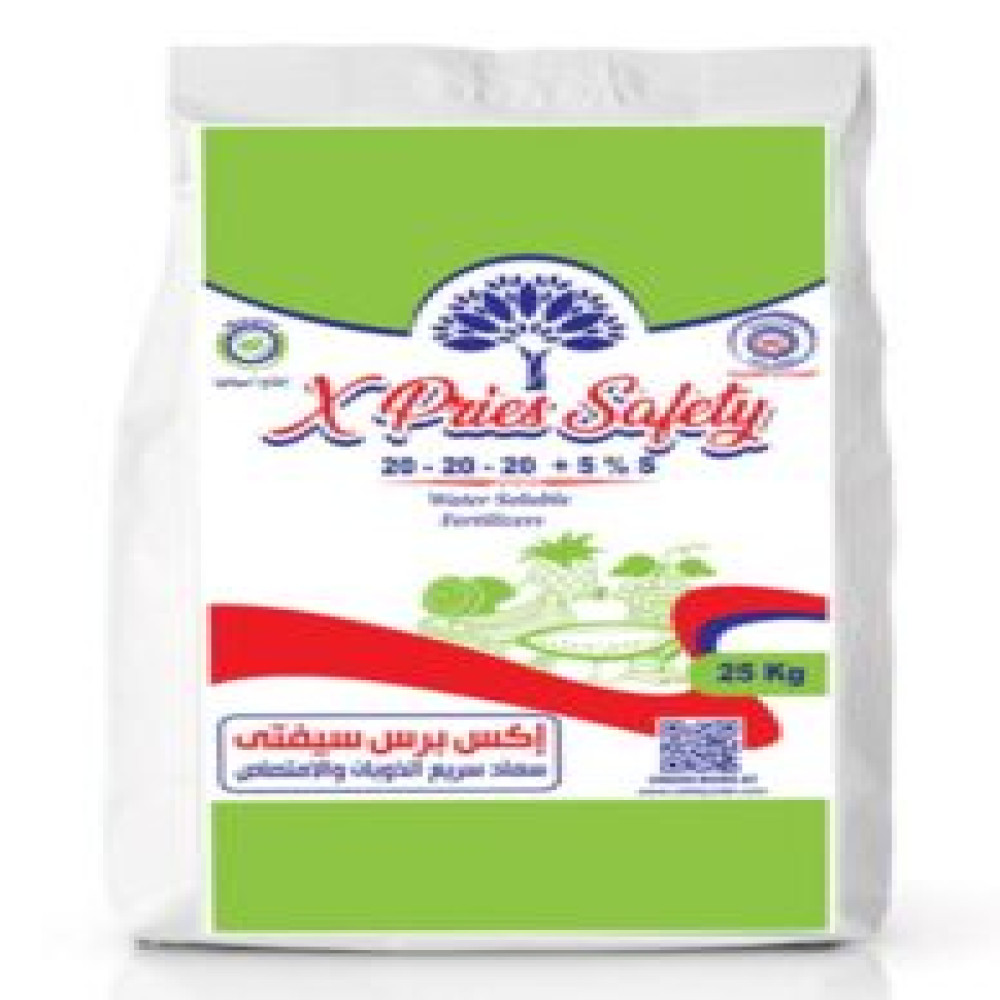
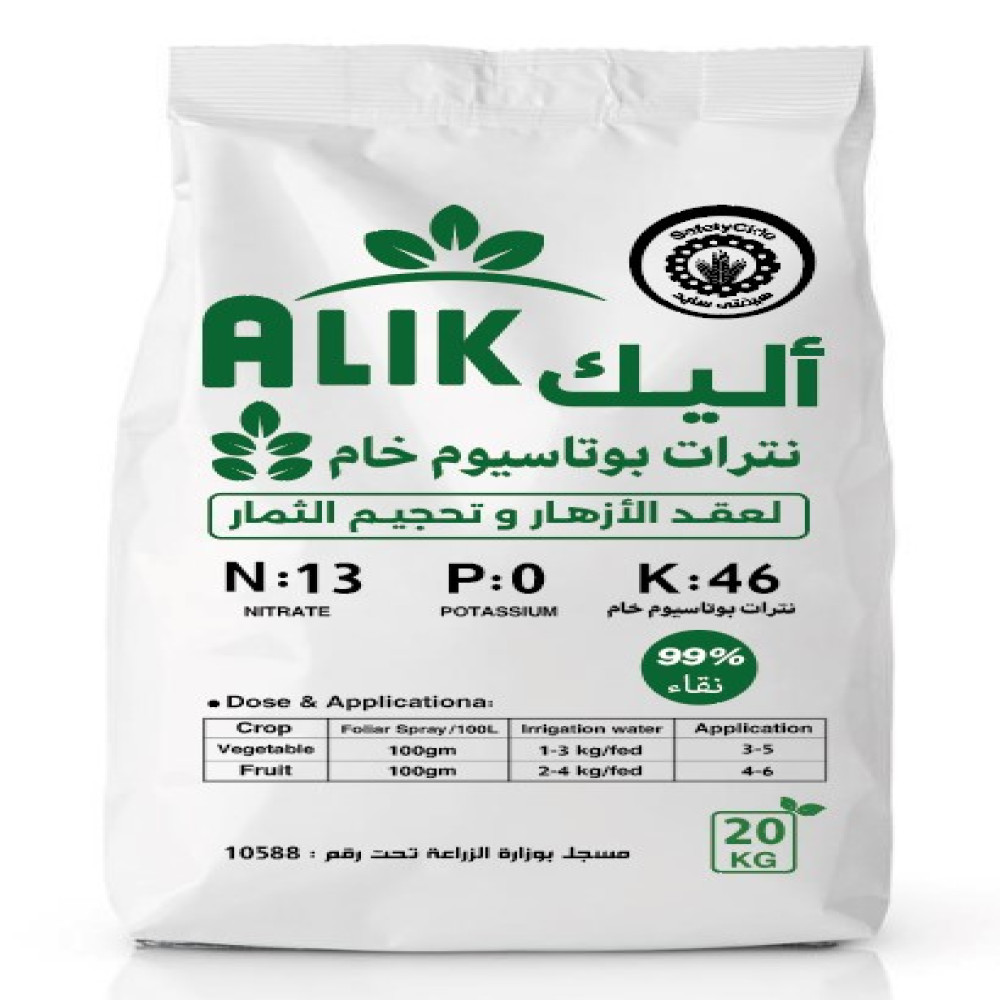
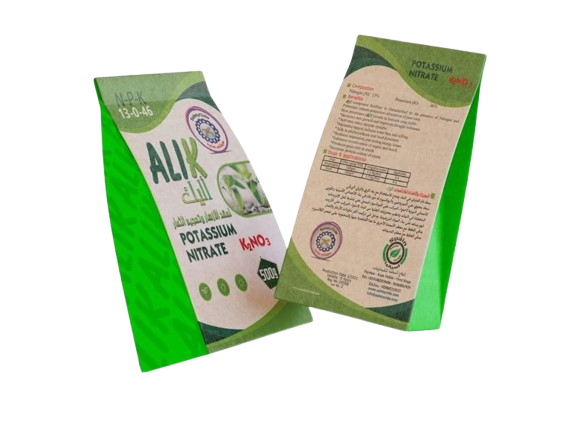


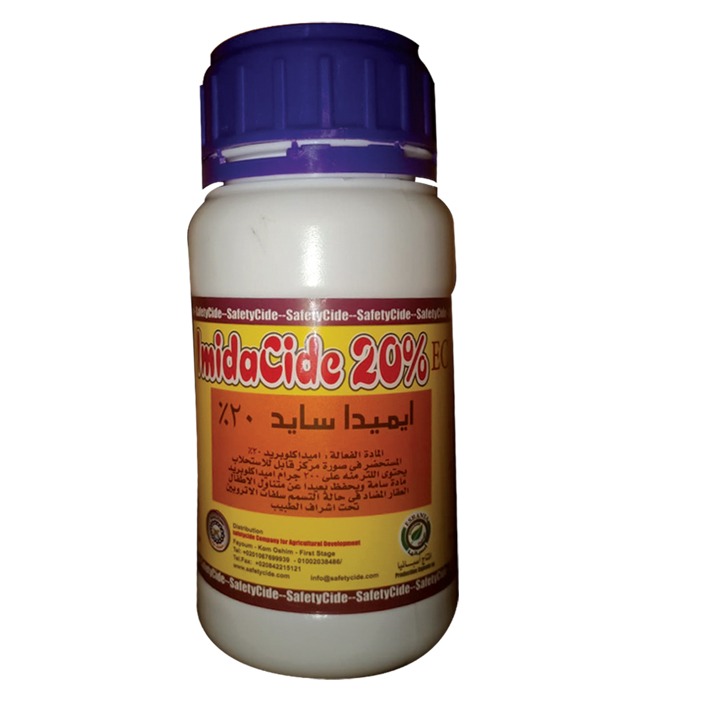
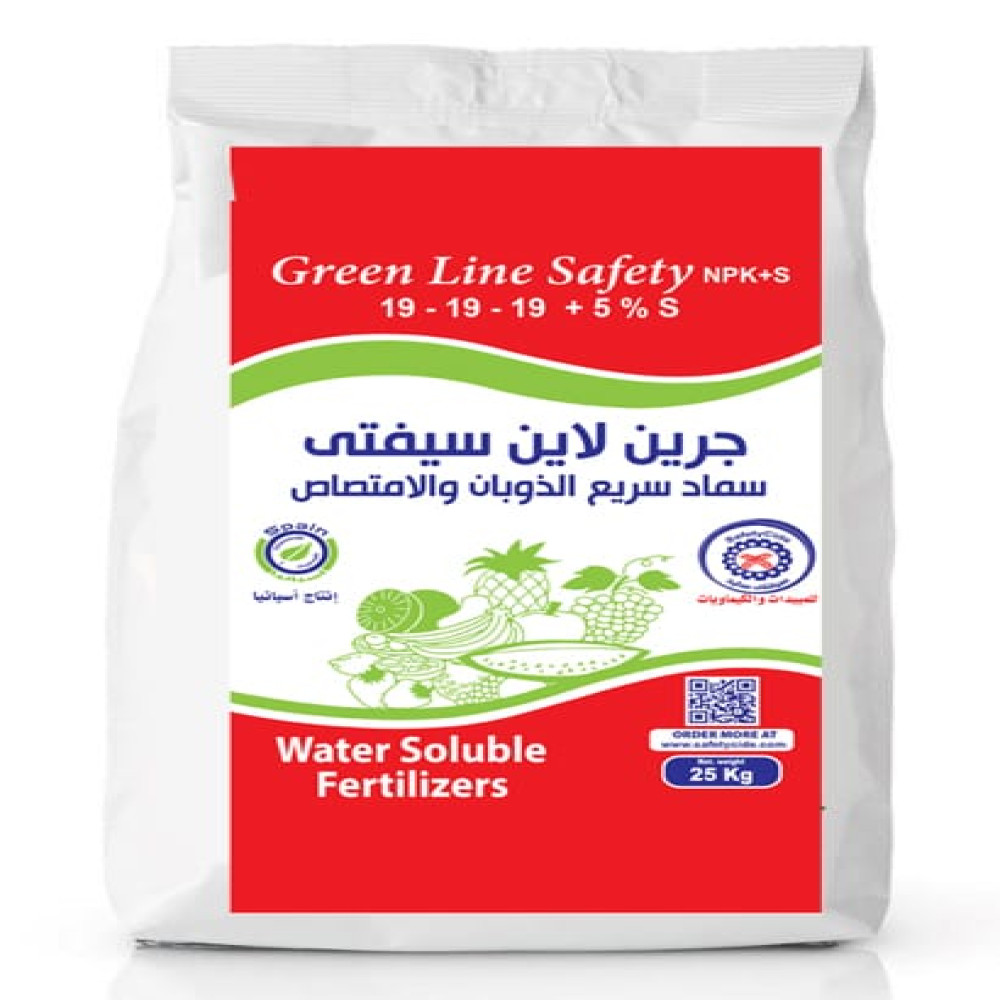


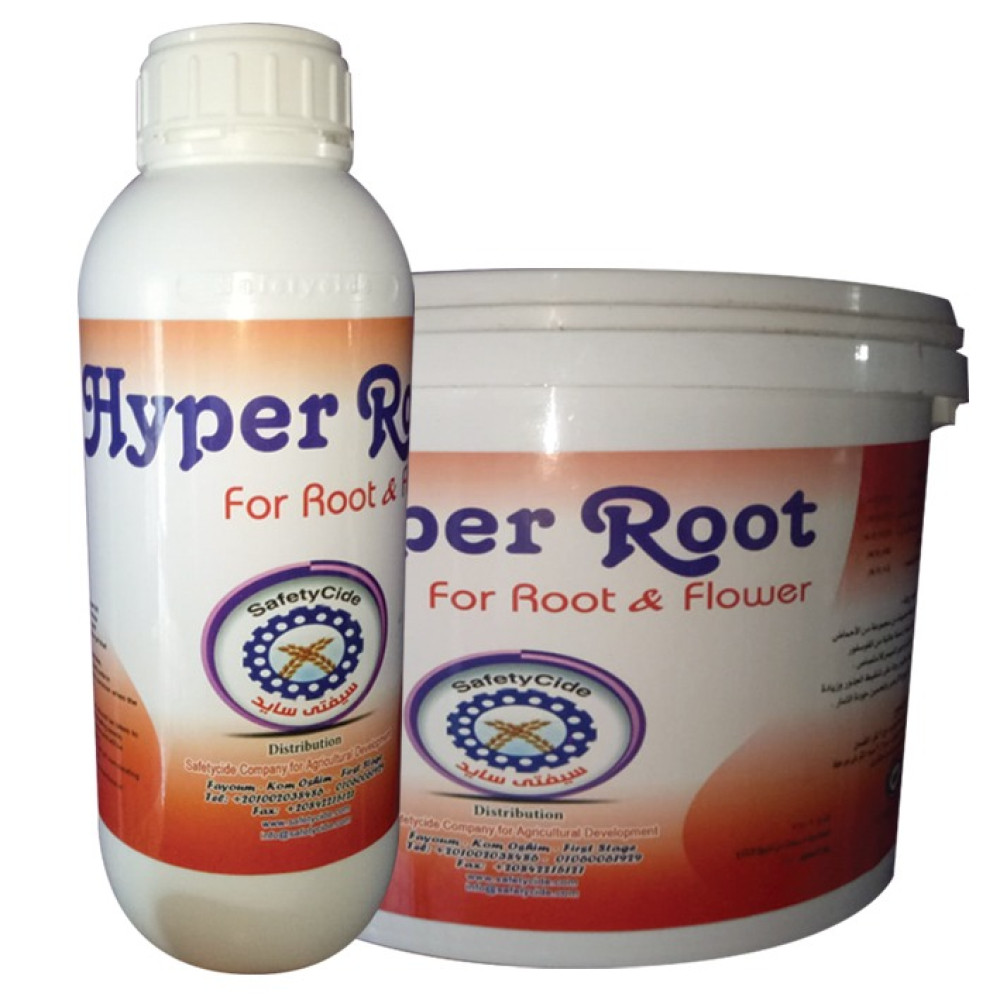

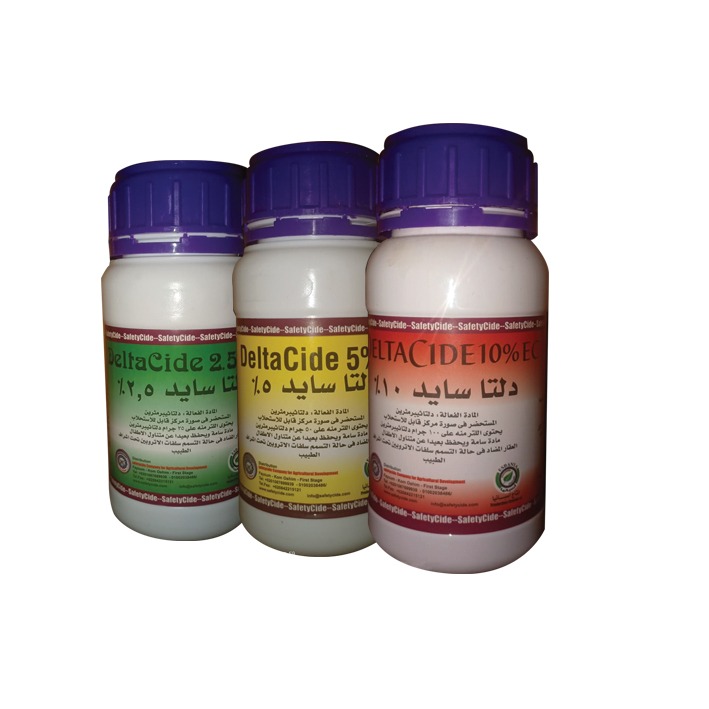
Reviews
There are no reviews yet.